Analysis of MTF in TDI-CCD Subpixel Dynamic Super-Resolution Imaging by Beam Splitter
Abstract
:1. Introduction
2. Sampling MTF of Subpixel Dynamic Super-Resolution Imaging
2.1. Partition Method of CCD
2.2. MTF of Over-Sampling with Linear CCDs
2.3. MTF of Over-Sampling with TDI–CCD
3. Experiments
3.1. Simulation Analysis
3.1.1. Simulation of Subpixel Imaging with Linear CCD
3.1.2. Simulation of Subpixel Imaging with Linear TDI–CCD
3.2. Verification of Real Subpixel Imaging System
4. Conclusions
Acknowledgments
Author Contributions
Conflicts of Interest
Appendix A
Appendix A.1. Derivation Details of Function (2)
Appendix A.2. Derivation Details of
Appendix A.3. Derivation Details of Function (7)
Appendix A.4. Derivation Details of
References
- Jerri, A.J. The Shannon sampling theorem—Its various extensions and applications: A tutorial review. Proc. IEEE 1977, 65, 1565–1596. [Google Scholar] [CrossRef]
- Jun, Z.; Wei, H.; Xiaodong, Z.; Guofan, J. Design of a low F-number freeform off-axis three-mirror system with rectangular field-of-view. J. Opt. 2015, 17, 015605. [Google Scholar]
- Wei, H.; Jun, Z.; Tong, Y.; Guofan, J. Construction method through forward and reverse ray tracing for a design of ultra-wide linear field-of-view off-axis freeform imaging systems. J. Opt. 2015, 17, 055603. [Google Scholar]
- He, L.Y.; Liu, J.H.; Li, G. Super resolution of aerial image by means of polyphase components reconstruction. Acta Phys. Sin. 2015, 64. [Google Scholar]
- Hu, S.; Zhang, S.; Zhang, A. Hyperspectral Imagery Super-Resolution by Adaptive POCS and Blur Metric. Sensors 2017, 17, 82. [Google Scholar] [CrossRef] [PubMed]
- Rajan, D.; Chaudhuri, S. Generalized interpolation and its applications in super-resolution imaging. Image Vis. Comput. 2001, 19, 957–969. [Google Scholar] [CrossRef]
- Tom, B.C.; Katsaggelos, A.K. Resolution enhancement of monochrome and color video using motion compensation. IEEE Trans. Image Process. 2001, 10, 278–287. [Google Scholar] [CrossRef] [PubMed]
- Borman, S.; Stevenson, R.L. Spatial Resolution Enhancement of Low-Resolution Image Sequences—A Comprehensive Review with Directions for Future Research. 1998. Available on line: https://www.researchgate.net/profile/Robert_Stevenson3/publication/2461146_Spatial_Resolution_Enhancement_of_Low-Resolution_Image_Sequences_-_A_Comprehensive_Review_with_Directions_for_Future_Research/links/5564757708ae9963a120209a/Spatial-Resolution-Enhancement-of-Low-Resolution-Image-Sequences-A-Comprehensive-Review-with-Directions-for-Future-Research.pdf (accessed on 30 August 2017).
- Jean, F.; Paul, C. Realization of a fast microscanning device for infrared focal plane arrays. In Proceedings of the SPIE Infrared Imaging Systems: Design, Analysis, Modeling, and Testing, Orlando, FL, USA, 8–14 April 1996; Volume 2743, pp. 185–196. [Google Scholar]
- Latry, C.; Rouge, B. SPOT5 thr mode. In Proceedings of the SPIE on Earth Observinci System, San Diego, CA, USA, 19–24 July 1998; Volume 3439, pp. 480–491. [Google Scholar]
- Skrbek, W.; Lorenz, E. HSRS: An infrared sensor for hot spot detection. In Proceedings of the SPIE Infrared Soaceborne Remote Sensing, San Diego, CA, USA, 18 November 1998; pp. 167–175. [Google Scholar]
- Sandau, R.; Braunecker, B.; Driescher, H. Design principles of the LH Systems ADS40 airborne digital sensor. In Proceedings of the International Archives of Photogrammetry and Remote Sensing, Amsterdam, The Netherlands, January 2000; Volume 33, pp. 258–265. [Google Scholar]
- Wang, X.; Zhang, J.; Feng, Z. Analysis of improvement amount of typical microscanning modes to IR imagery quality. Infrared Phys. Technol. 2005, 46, 412–417. [Google Scholar] [CrossRef]
- Wang, X.; Hua, H. Theoretical analysis for integral imaging performance based on microscanning of a microlens array. Opt. Lett. 2008, 33, 449–451. [Google Scholar] [CrossRef] [PubMed]
- Wang, X.; Zhang, J.; Chang, H. Assessment of the Performance of Staring Infrared Imaging Array Based on Microscanning Modes. Int. J. Infrared Millim. Wave 2004, 25, 905–916. [Google Scholar] [CrossRef]
- Zhang, X.; Liu, Y.; Zhang, J. Super-resolved imaging system with oversampling technology. In Proceedings of the 3rd International Symposium on Advanced Optical Manufacturing and Testing Technologies, Chengdu, China, 8–12 July 2007; International Society for Optics and Photonics: Bellingham, WA, USA, 2007. [Google Scholar] [CrossRef]
- Hadar, O.; Boreman, G.D. Oversampling requirements for pixelated-imager systems. Opt. Eng. 1999, 38, 782–785. [Google Scholar]
- Liu, X.; Wen, D.; Qiao, W. Subpixel imaging technique. In Proceedings of the SPIE on Sensors and Controls for Intelligent Machining, Boston, MA, USA, 19–22 September 1999; Volume 3832, pp. 158–162. [Google Scholar]
- Alam, M.S.; Bognar, J.G.; Hardie, R.C.; Yasuda, B.J. Infrared image registration and high-resolution reconstruction using multiple translationally shifted aliased video frames. IEEE Trans. Instrum. Meas. 2000, 49, 915–923. [Google Scholar] [CrossRef]
- Lim, W.; Park, M.; Kang, M.G. Spatially adaptive regularized iterative high resolution image reconstruction algorithm. In Proceedings of the VCIP2001, Photonics West, San Jose, CA, USA, 20 January 2001; pp. 20–26. [Google Scholar]
- Hardie, R.C.; Barnard, K.J.; Bognar, J.G.; Armstrong, E.E.; Watson, E.A. High-resolution image reconstruction from a sequence of rotated and translated frames and its application to an infrared imaging system. Opt. Eng. 1998, 37, 247–260. [Google Scholar]
- Vainshtein, B.K. Modern Crystallography: Fundamentals of Crystals, Symmetry and Methods of Structural Crystallography. Acta Crysrallogr. 1995, 51, 234–235. [Google Scholar] [CrossRef]
- Olivas, A.; Antúnez-García, J.; Fuentes, S. Electronic properties of unsupported trimetallic catalysts. Catal. Today 2014, 220, 106–112. [Google Scholar] [CrossRef]
- Song, H.F.; Liu, H.F. Modified mean-field potential approach to thermodynamic properties of a low-symmetry crystal: Beryllium as a prototype. Phys. Rev. B 2007, 75, 245126. [Google Scholar] [CrossRef]
- Wasserman, E.; Stixrude, L.; Cohen, R.E. Thermal properties of iron at high pressures and temperatures. Phys. Rev. B 1996, 53, 8296. [Google Scholar] [CrossRef]
- Jiuxun, S.; Lingcang, C.; Qiang, W. Equivalence of the analytic mean-field potential approach with free-volume theory and verification of its applicability based on the Vinet equation of state. Phys. Rev. B 2005, 71, 024107. [Google Scholar] [CrossRef]
- Qiaolin, H.; Xiangmin, L. Application of TDICCD on real-time earth reconnaissance satellite. In Proceedings of the International Society for Optics and Photonics, Beijing, China, 16–19 September 1998; pp. 93–104. [Google Scholar]
- Park, S.K.; Schowengerdt, R.; Kaczynski, M.A. Modulation-transfer-function analysis for sampled image systems. Appl. Opt. 1984, 23, 2572–2582. [Google Scholar] [CrossRef] [PubMed]
- Hadar, O.; Dogariu, A.C.; Boreman, G.D. Angular dependence of sampling MTF. In Proceedings of the 10th Meeting on Optical Engineering in Israel, Jerusalem, Israel, 2–6 March 1997; pp. 536–547. [Google Scholar]


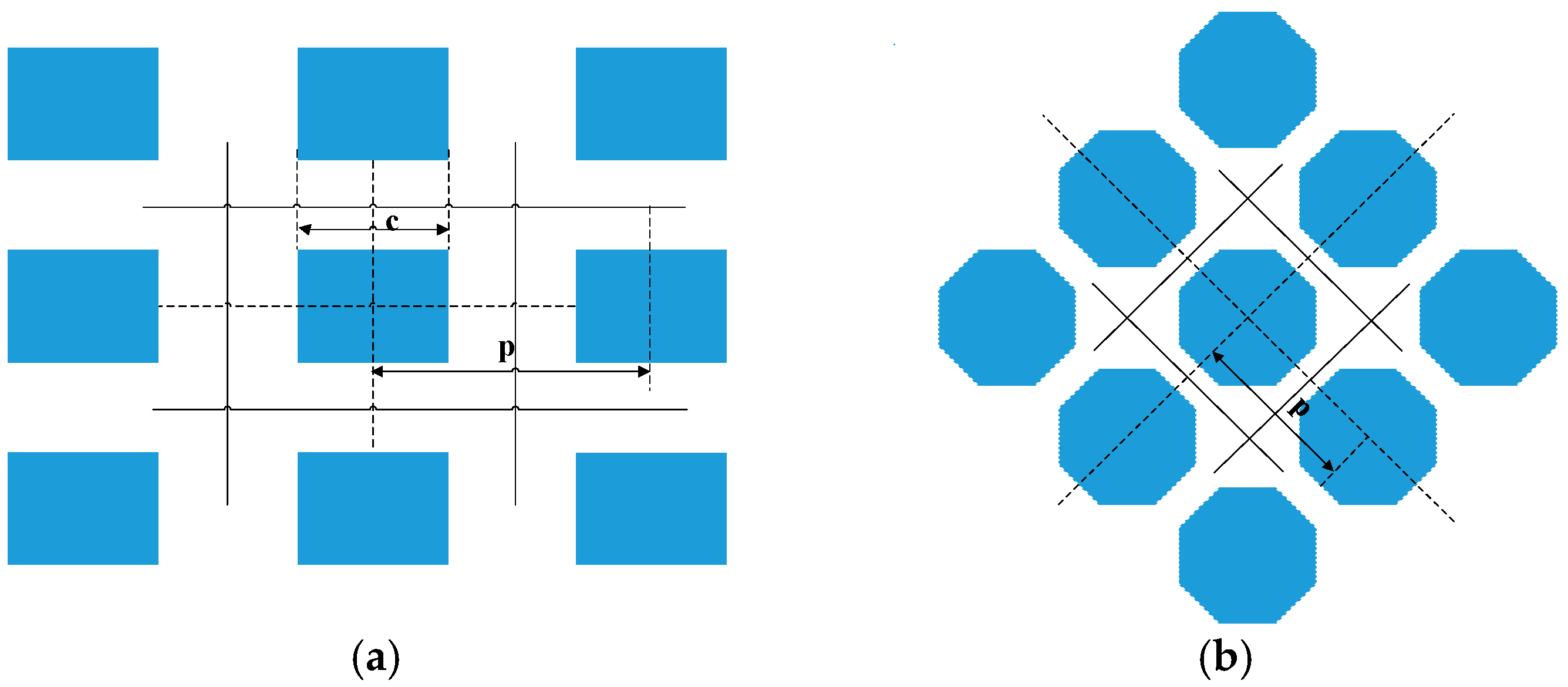
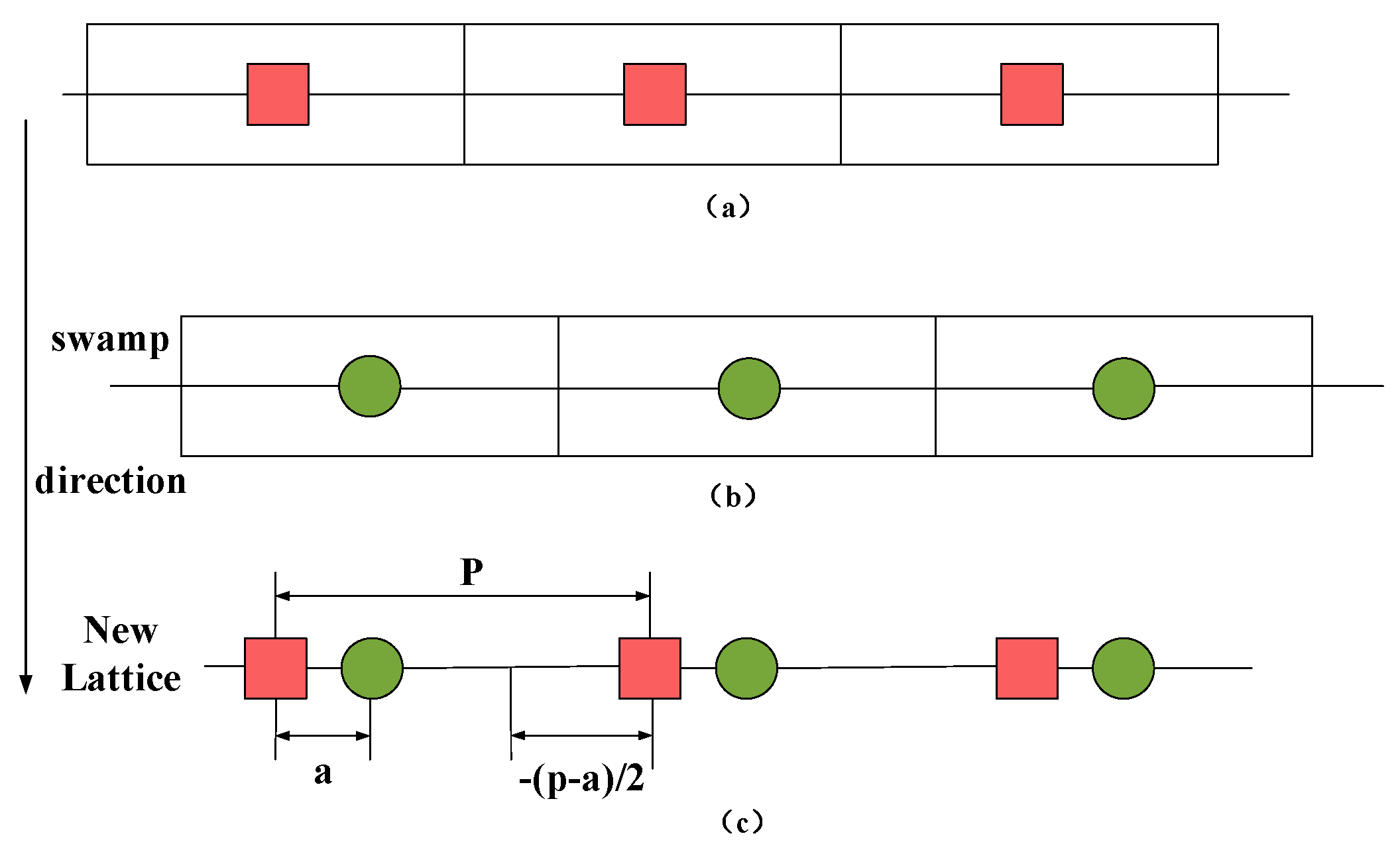
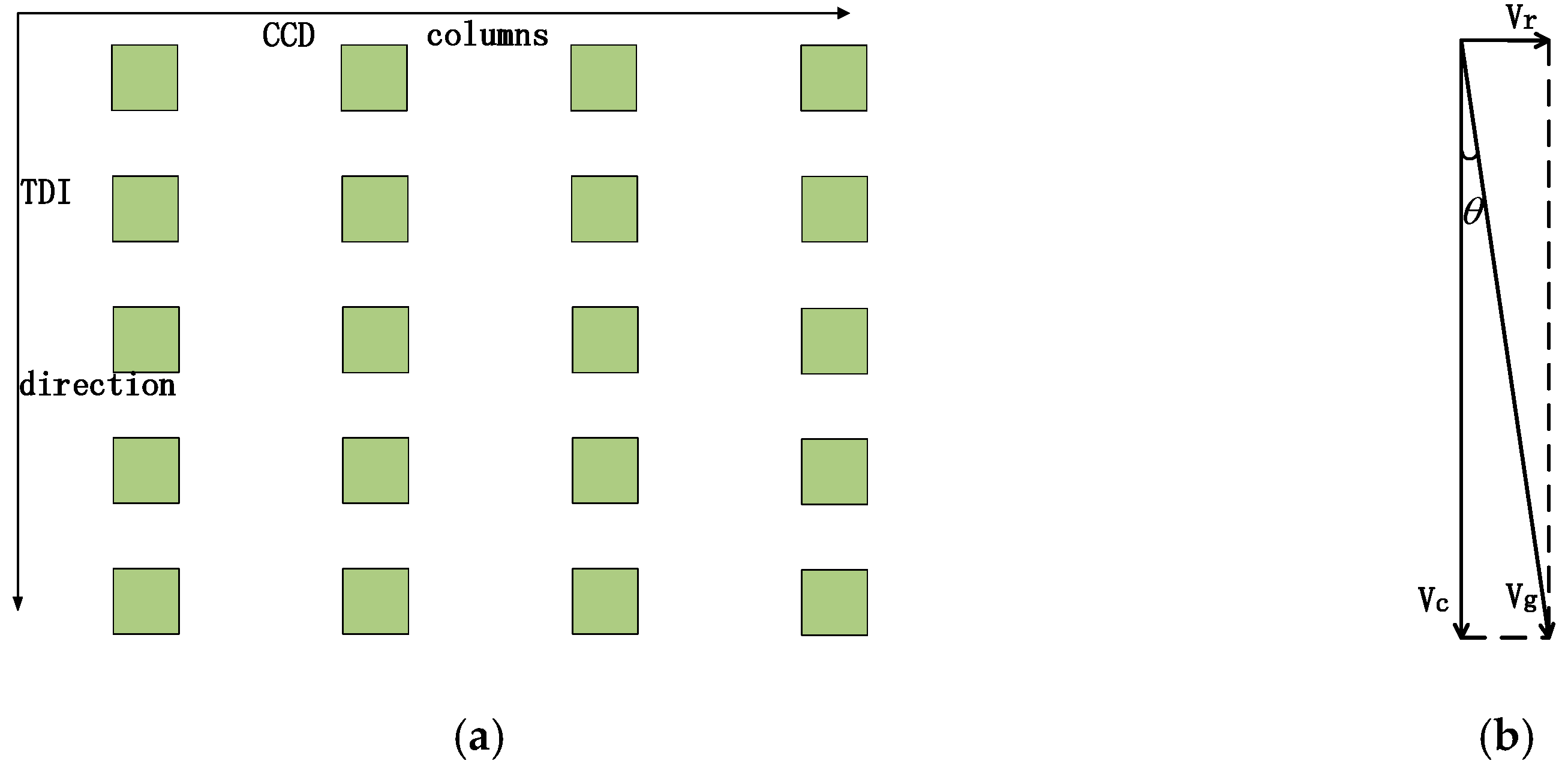
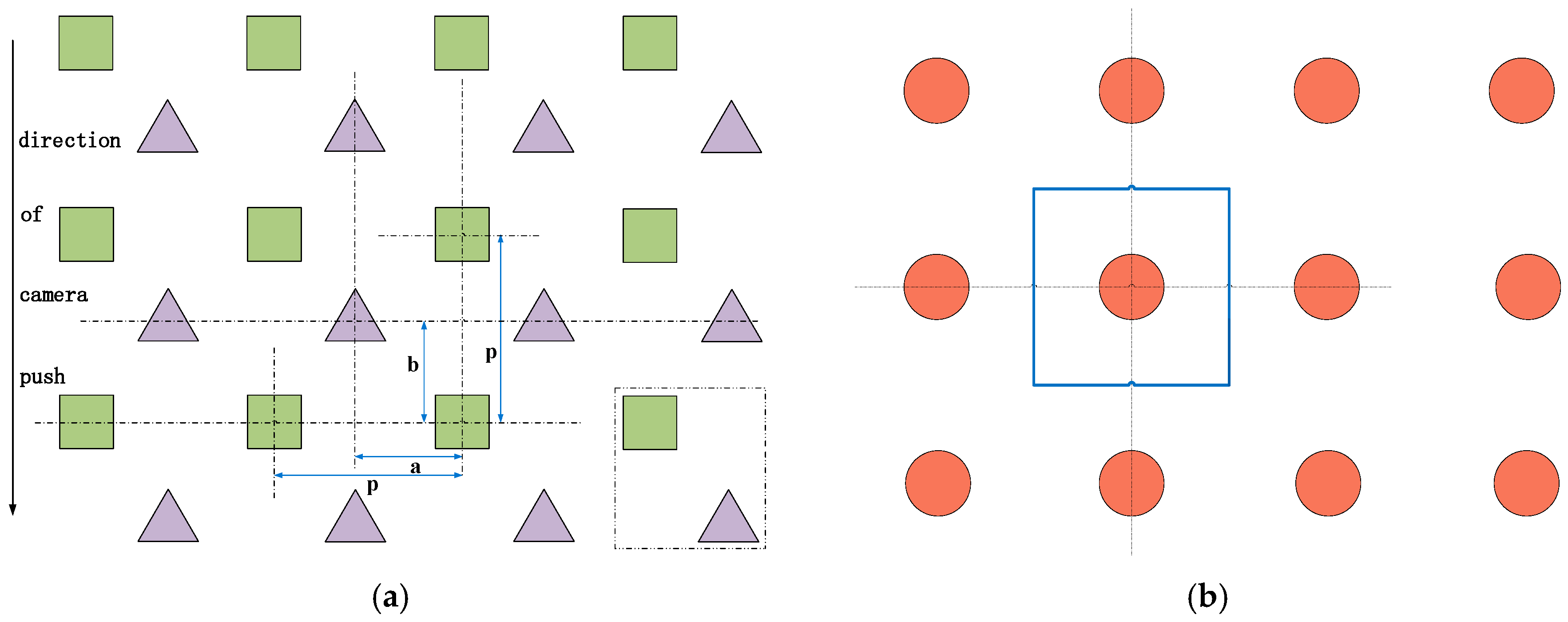


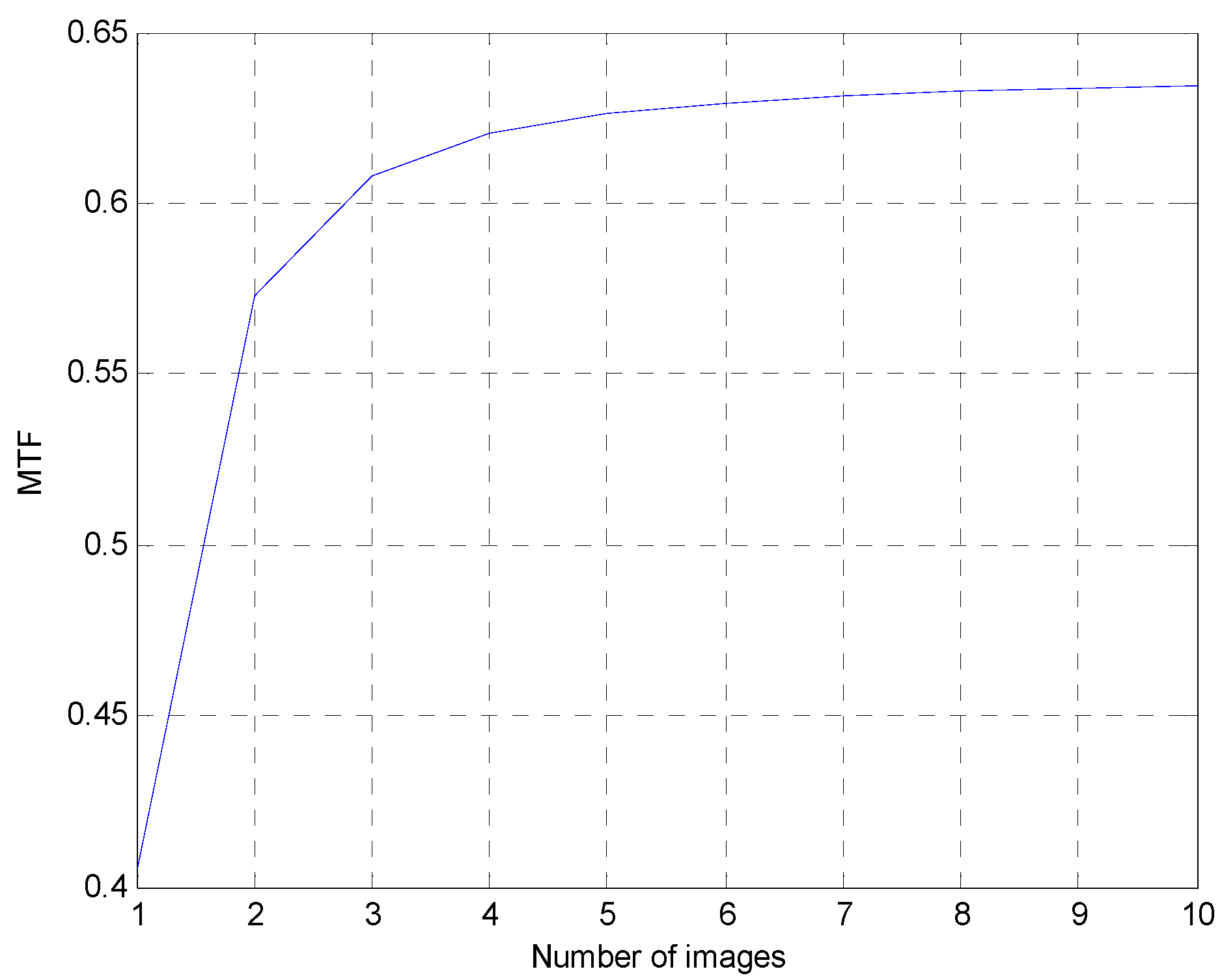
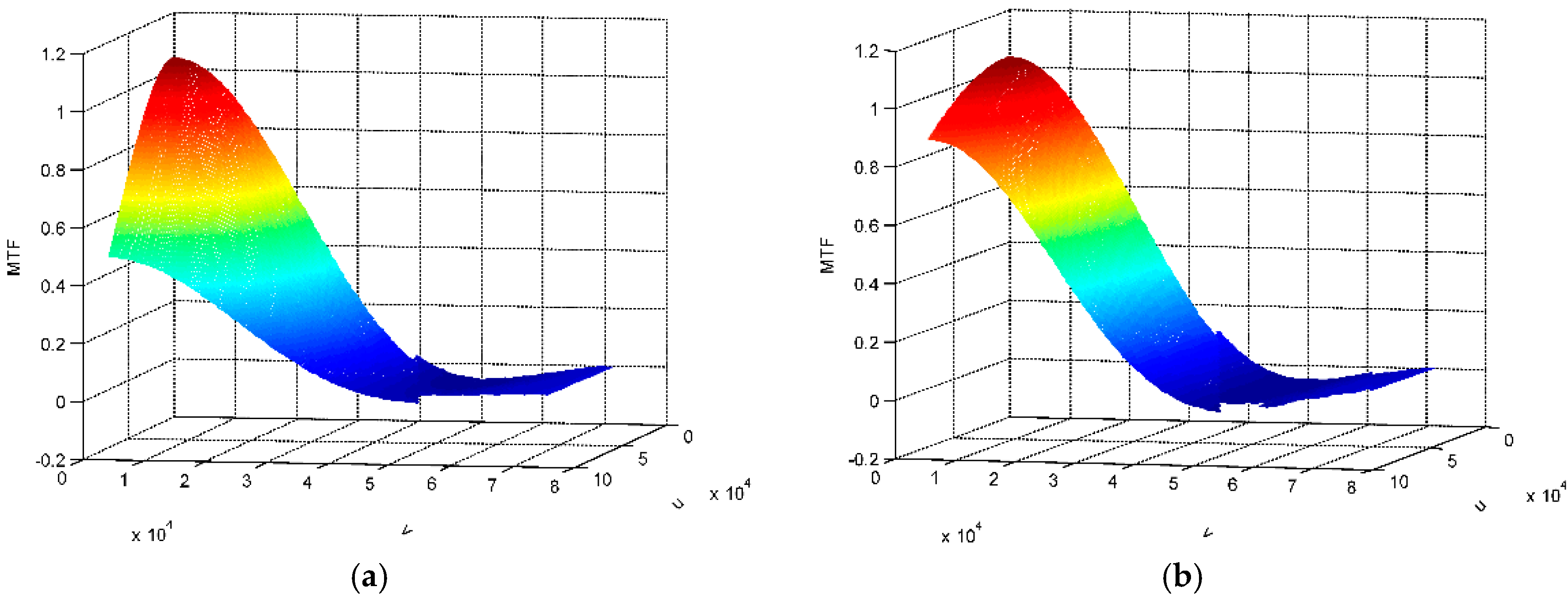
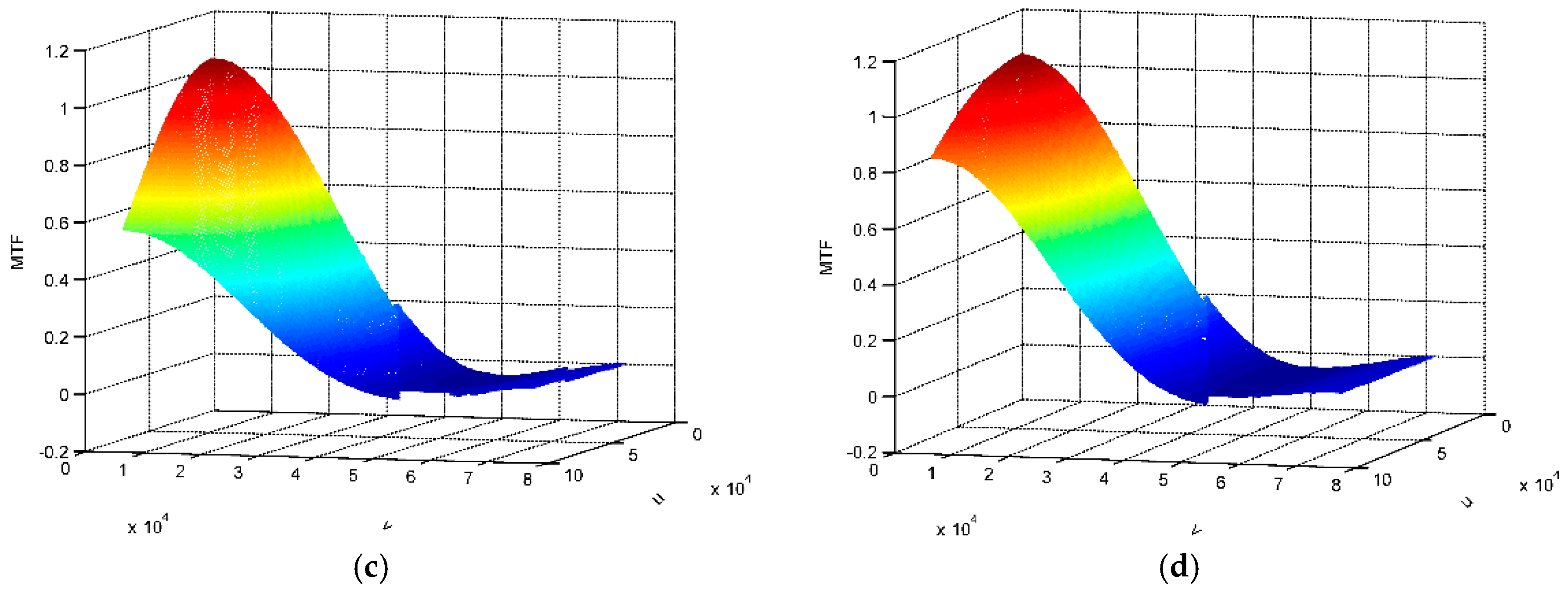
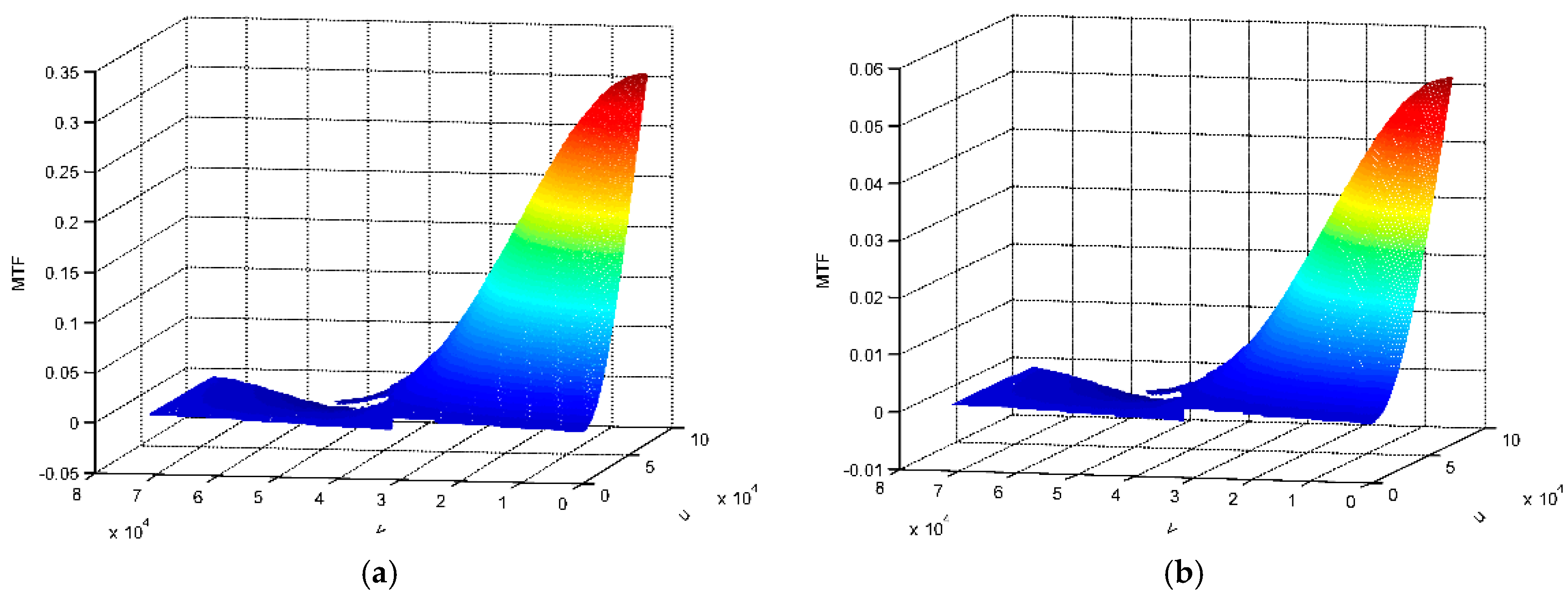
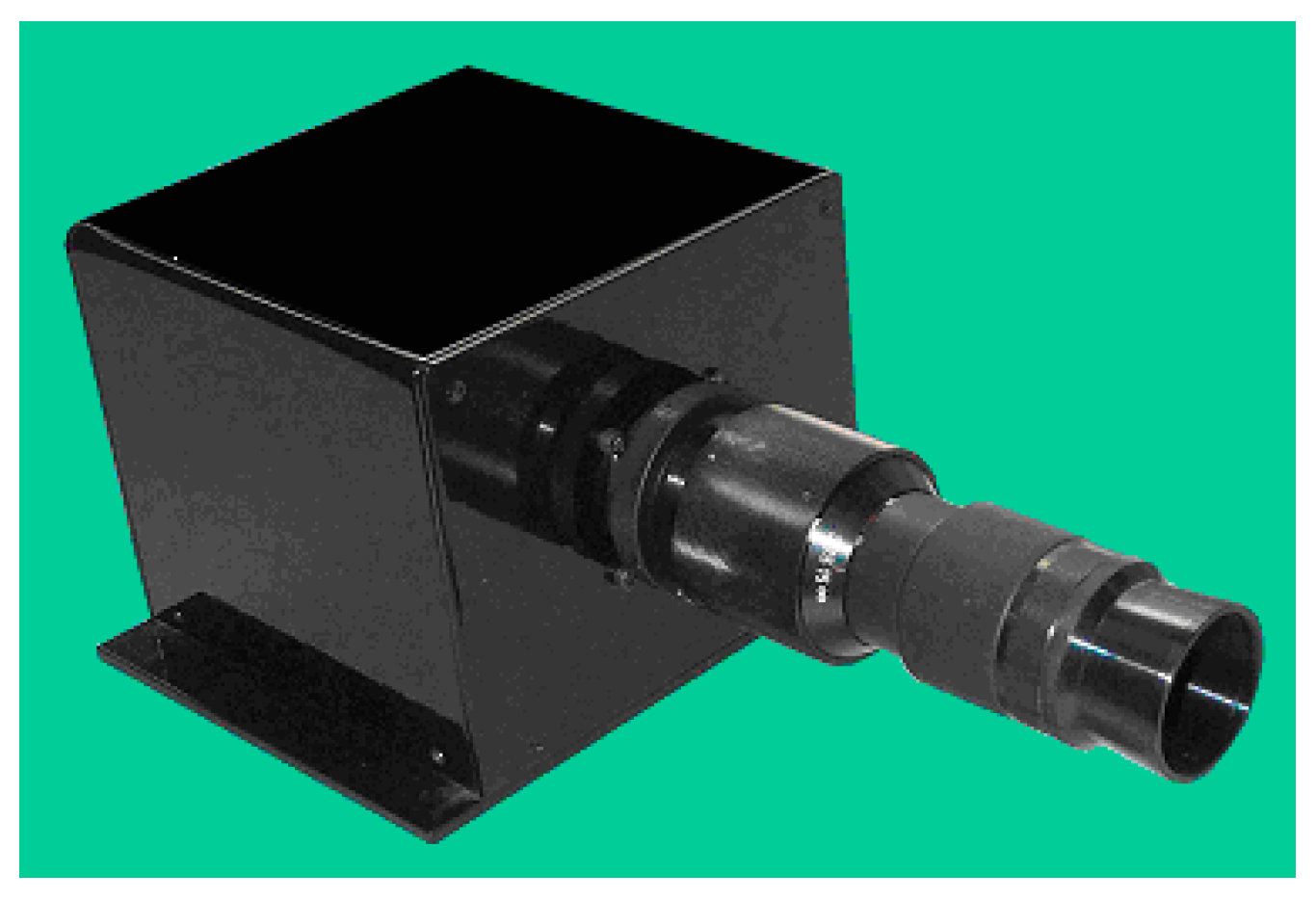
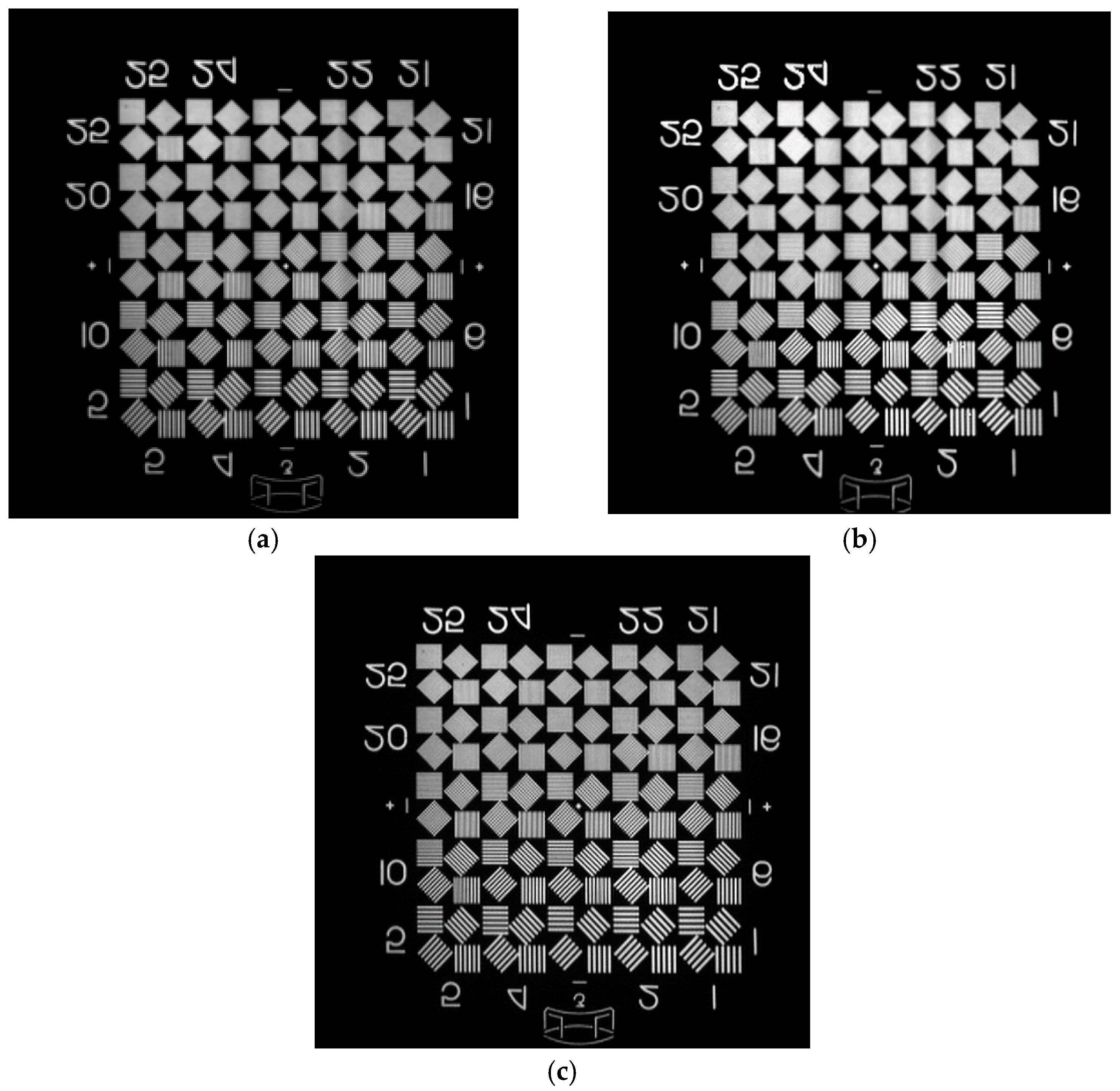
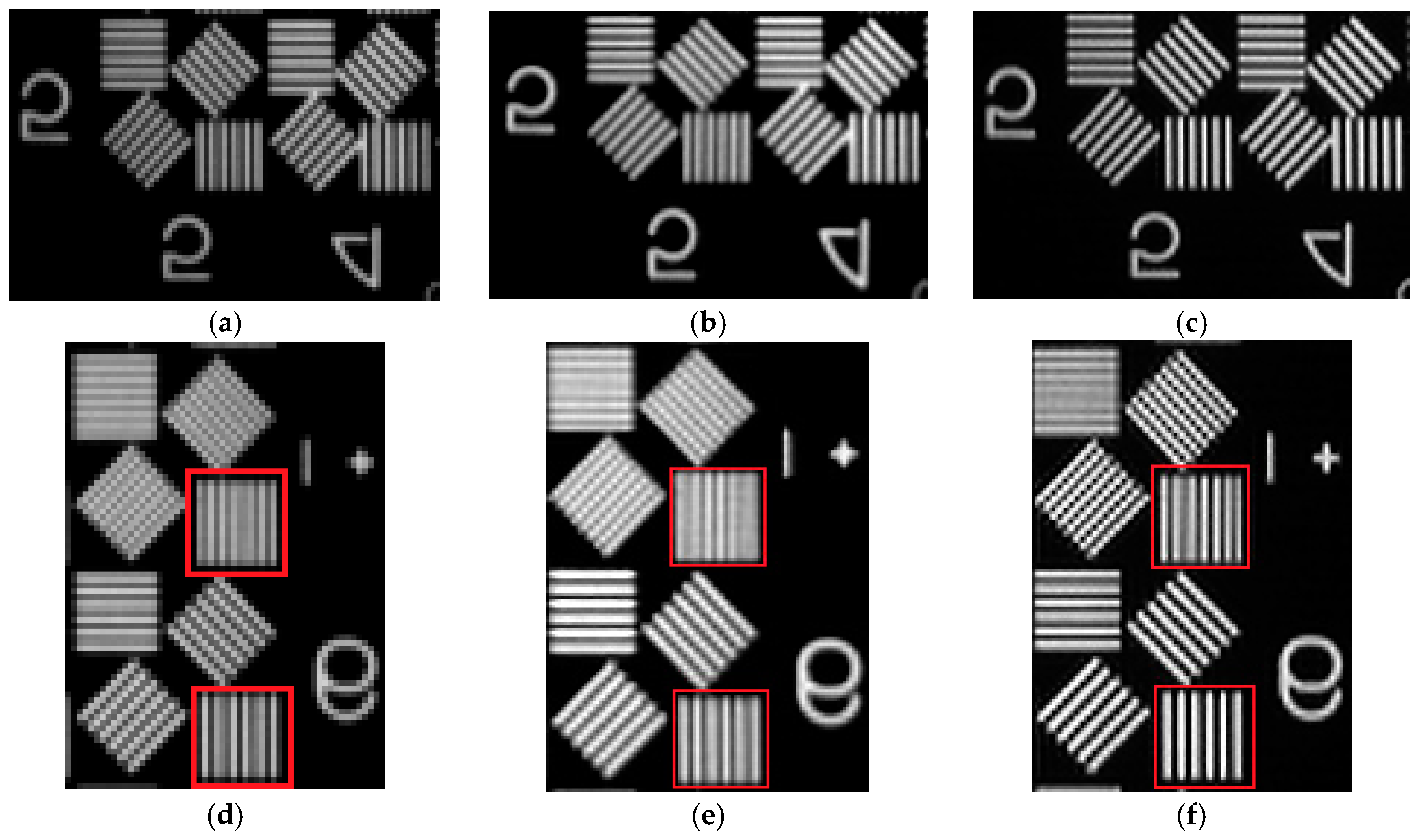
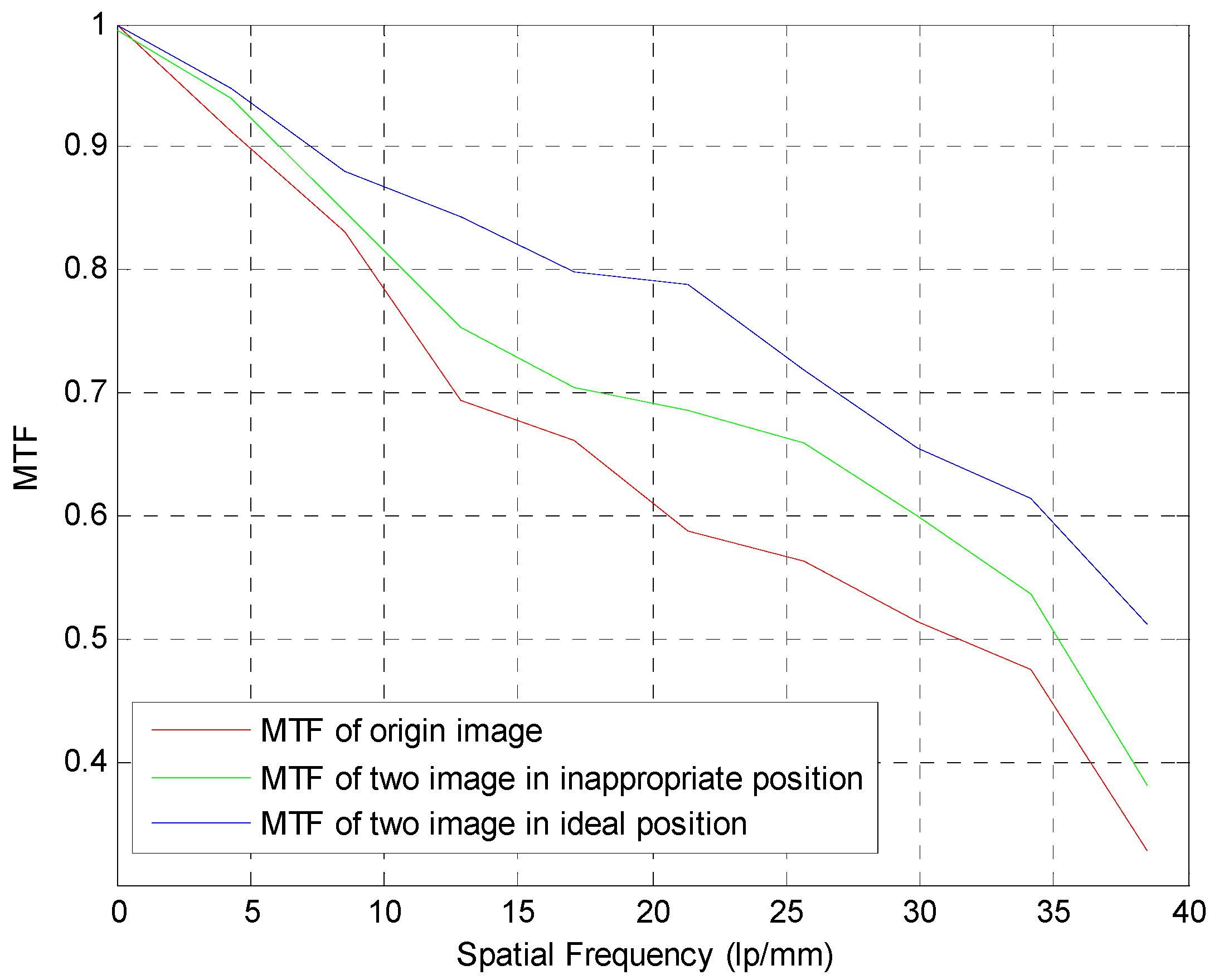
| Parameter | Index |
|---|---|
| Ground resolution | 2.1 m |
| Width | 51 km |
| MTF of Lab | 0.23 (71.5 lp/mm) |
| SNR | |
| Pixel size | 7 μm |
| TDI stages | 24 |
| CCD duty cyle | 100% |
| Parameter | Index |
|---|---|
| CCD type | IL-E2 TDI-CCD |
| Number of pixels | 2048 |
| Dynamic range | 1600:1 |
| Pixel size | 13 μm |
| TDI stages | 24 |
| Speed of valid data | 30 MHz |
© 2017 by the authors. Licensee MDPI, Basel, Switzerland. This article is an open access article distributed under the terms and conditions of the Creative Commons Attribution (CC BY) license (http://creativecommons.org/licenses/by/4.0/).
Share and Cite
Gao, K.; Han, L.; Liu, H.; Dou, Z.; Ni, G.; Zhou, Y. Analysis of MTF in TDI-CCD Subpixel Dynamic Super-Resolution Imaging by Beam Splitter. Appl. Sci. 2017, 7, 905. https://doi.org/10.3390/app7090905
Gao K, Han L, Liu H, Dou Z, Ni G, Zhou Y. Analysis of MTF in TDI-CCD Subpixel Dynamic Super-Resolution Imaging by Beam Splitter. Applied Sciences. 2017; 7(9):905. https://doi.org/10.3390/app7090905
Chicago/Turabian StyleGao, Kun, Lu Han, Hongmiao Liu, Zeyang Dou, Guoqiang Ni, and Yingjie Zhou. 2017. "Analysis of MTF in TDI-CCD Subpixel Dynamic Super-Resolution Imaging by Beam Splitter" Applied Sciences 7, no. 9: 905. https://doi.org/10.3390/app7090905




